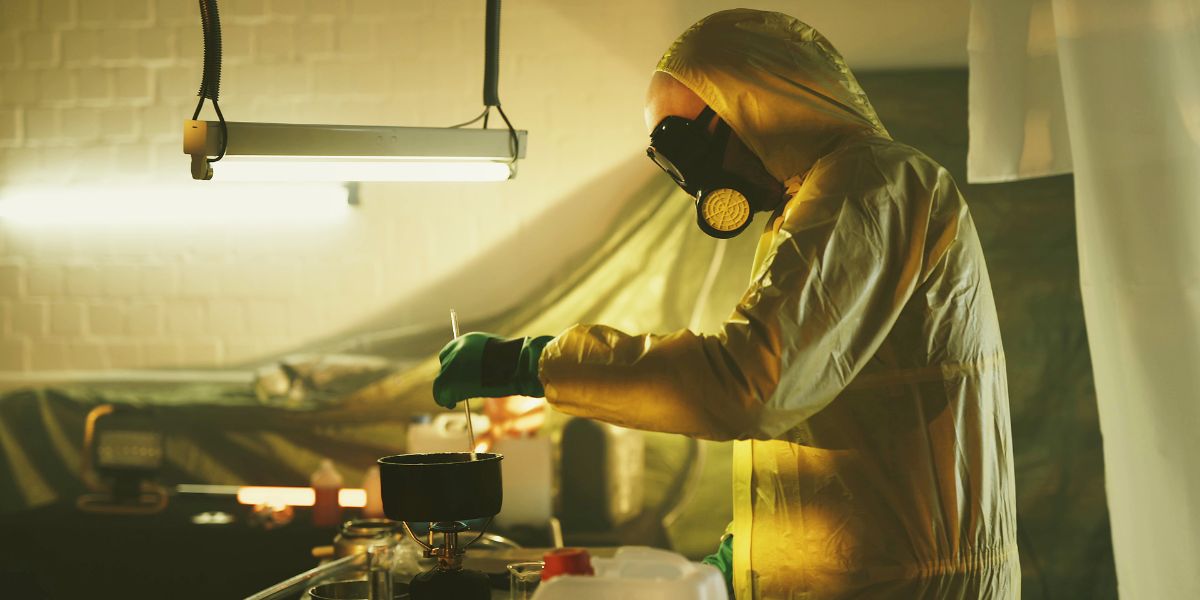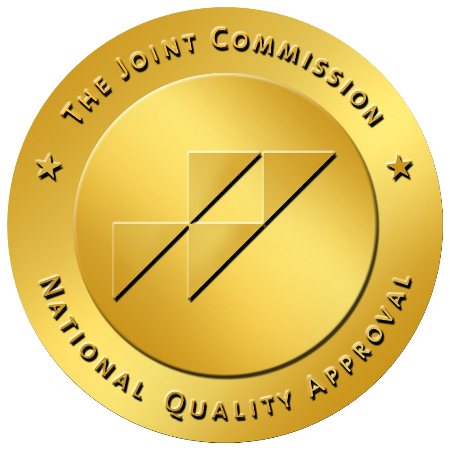What Is Meth Made From? Ingredients and Production

Meth is categorized as Schedule II controlled substance that can cause addiction and serious health issues with prolonged use. It is also called methamphetamine. Long-term meth use can lead to both physical and mental health problems. Frequently referred to by slang terms like meth, crystal meth, ice, speed, and glass, it is distinguished for its powerful impacts.
Meth is a strong stimulant that boosts energy, talkativeness, and feelings of happiness. Meth is synthesized in laboratories through the combination of various toxic chemicals, unlike naturally-derived narcotics such as marijuana, heroin, and cocaine.
This article explains what meth is made from, the ingredients used, the production process involved, and the health risks of meth addiction.
What Is Meth Made From?
Meth can be made in a small lab using ephedrine or pseudoephedrine. These ingredients are commonly found in cold medicines that can be purchased without a prescription.
In 2005, Congress passed a law called the Combat Methamphetamine Epidemic Act to stop methamphetamine production. When Congress passed this law, its only purpose was to stop the methamphetamine manufacturing process. The law required pharmacies and stores to track all purchases of pseudoephedrine and restrict how much people can buy in a single day.

How Is Meth Made?
People mix ephedrine and pseudoephedrine, known as precursor chemicals, with harmful chemicals called cutting agents to make meth. These additional ingredients can include other stimulant drugs, as well as household chemicals like drain cleaner and paint thinner.
To make this, mix the ingredients, add water, and heat with alcohol or acetone. This heating process is crucial as it generates the meth crystals.
What Is Meth Cut With?
Meth is often “cut” or diluted with various substances to enhance its profitability, effects, and potency. Meth cooks use these cutting agents because they are inexpensive, readily available, and commonly found in household items, such as waste products like use kitchen oil. Adding these substances increases the health dangers of the drug and makes a deadly overdose more likely.
Common ingredients used to make meth include:
- Battery acid
- Lithium
- Turpentine
- Nail polish remover
- Chemical substances such as drain cleaner
- Anhydrous ammonia
- Freon
- Phosphorous trioxide, also known as red phosphorus
- Amphetamines or other stimulant drugs
- Fentanyl or other deadly synthetic opioids
Making Meth
The Drug Enforcement Administration (DEA) states that Mexican drug syndicates are the primary producers and suppliers of meth to urban areas in the Midwest and Western United States. Large illegal drug groups operate “super labs” that quickly make a lot of powerful meth for cheap.
Domestic “small toxic labs” produce limited quantities of meth, typically in makeshift settings such as motel rooms, vehicles, rural areas, or other locations. One big worry is the toxic waste from labs that can harm people, including children, by exposing them to chemicals. For every pound of meth produced, up to five pounds of toxic waste may contaminate the soil and groundwater surrounding these areas.
The process of making meth releases harmful toxic fumes that can hurt anyone around them. Meth labs are highly flammable because of the chemicals used.
These chemicals can create explosive gases. This increases the risk of accidental fires and explosions. In 2017, the National Institute on Drug Abuse (NIDA) reported 3,036 incidents involving meth labs.

Dangers of Meth
With prolonged use, meth users often suffer from severe short-term health effects, including unpredictable behavior and aggression. Additionally, they may experience psychotic episodes and intense paranoia.
Long-term meth use can lead to many serious health and psychological problems. If you use meth for a long time, you might experience:
- Insomnia
- Hostile emotions
- Explosive tantrums
- Respiratory issues
- Intense yearnings
- Severe dental decay, commonly referred to as “meth mouth,” that leads to tooth loss
- Despondency
- False beliefs
- Emotional fluctuations
- Visual and auditory misperceptions
Meth Addiction Treatment at Northridge Addiction Treatment Center
Studies indicate that the most effective remedies for methamphetamine dependency include behavioral treatment methods such as cognitive-behavioral therapy (CBT), one-on-one and group therapy, 12-step assistance programs, and a nurturing atmosphere that significantly decreases meth consumption.
If you or a loved one is struggling with methamphetamine addiction and a co-occurring mental health disorder, Northridge Addiction Treatment Center‘s residential facility could be the perfect place to start reclaiming your life and establishing a foundation for recovery.
The caring addiction specialists on our team work together with you to create a customized treatment plan that aligns with your individual needs and future aspirations. Residential rehabilitation has demonstrated superior recovery outcomes compared to outpatient schemes, particularly for intense substance dependencies such as methamphetamine.
Our medical detox program is the initial step in our evidence-based treatment plan at Northridge Addiction Treatment Center. You will receive continuous medical care to ensure your safety during withdrawal and support your empowerment to begin treatment.
Our empathetic team of addiction experts works together with you to create a customized treatment strategy that aligns with your unique needs and future objectives.
Receive a free consultation from one of our caring treatment specialists today. They are eager to assist you on your journey to recovery. Reach out now.
Find Meaningful Recovery
Our caring and compassionate specialists are eager to help you comfortably navigate this journey to recovery. Our individualized treatment plan, programs, and therapies may be a perfect match for you or your loved one. Let us assist you in living the happy life you deserve. It starts with a phone call.




